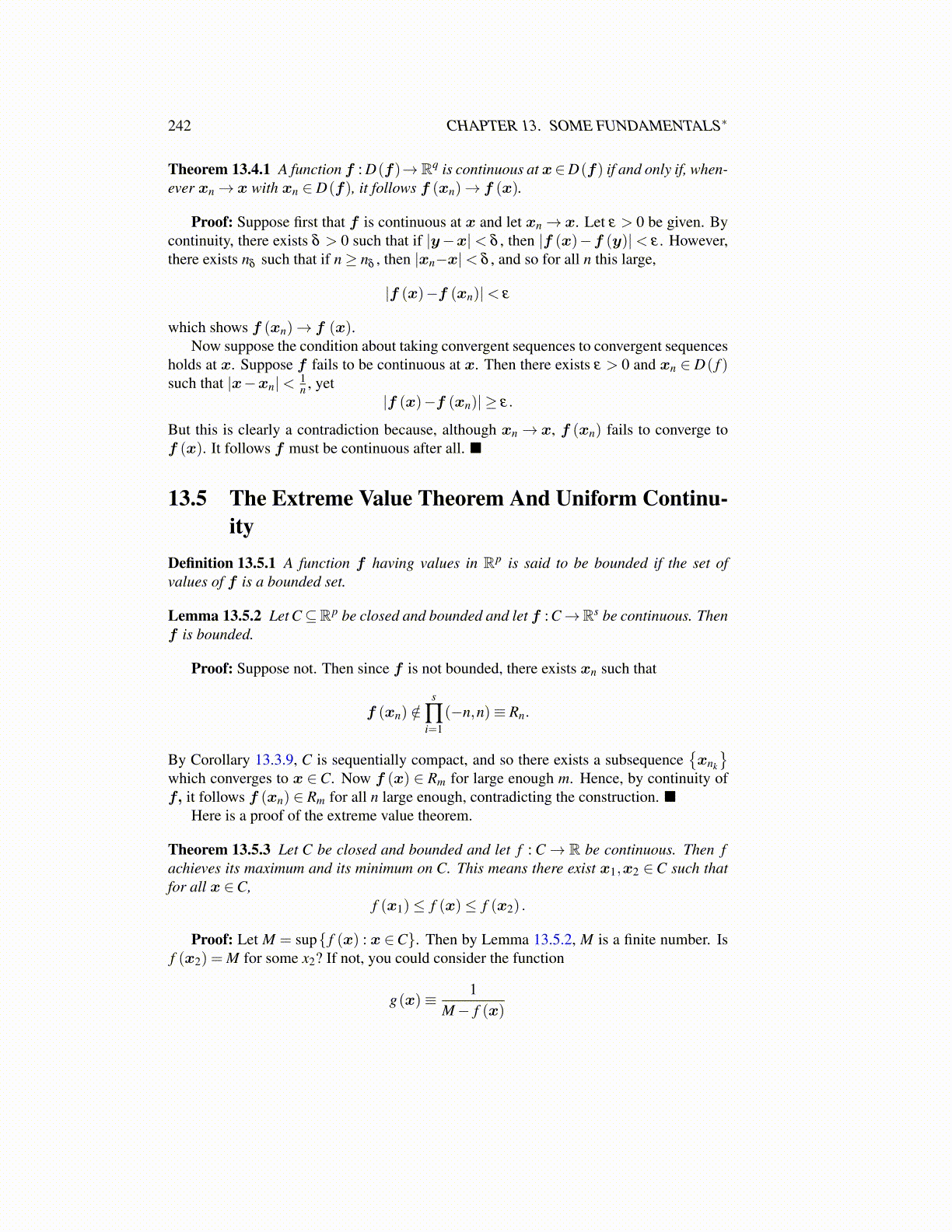
242 CHAPTER 13. SOME FUNDAMENTALS∗
Theorem 13.4.1 A function f : D(f)→ Rq is continuous at x∈D(f) if and only if, when-ever xn→ x with xn ∈ D(f), it follows f (xn)→ f (x).
Proof: Suppose first that f is continuous at x and let xn→ x. Let ε > 0 be given. Bycontinuity, there exists δ > 0 such that if |y−x|< δ , then |f (x)−f (y)|< ε . However,there exists nδ such that if n≥ nδ , then |xn−x|< δ , and so for all n this large,
|f (x)−f (xn)|< ε
which shows f (xn)→ f (x).Now suppose the condition about taking convergent sequences to convergent sequences
holds at x. Suppose f fails to be continuous at x. Then there exists ε > 0 and xn ∈ D( f )such that |x−xn|< 1
n , yet|f (x)−f (xn)| ≥ ε.
But this is clearly a contradiction because, although xn → x, f (xn) fails to converge tof (x). It follows f must be continuous after all. ■
13.5 The Extreme Value Theorem And Uniform Continu-ity
Definition 13.5.1 A function f having values in Rp is said to be bounded if the set ofvalues of f is a bounded set.
Lemma 13.5.2 Let C⊆Rp be closed and bounded and let f : C→Rs be continuous. Thenf is bounded.
Proof: Suppose not. Then since f is not bounded, there exists xn such that
f (xn) /∈s
∏i=1
(−n,n)≡ Rn.
By Corollary 13.3.9, C is sequentially compact, and so there exists a subsequence{xnk
}which converges to x ∈C. Now f (x) ∈ Rm for large enough m. Hence, by continuity off, it follows f (xn) ∈ Rm for all n large enough, contradicting the construction. ■
Here is a proof of the extreme value theorem.
Theorem 13.5.3 Let C be closed and bounded and let f : C→ R be continuous. Then fachieves its maximum and its minimum on C. This means there exist x1,x2 ∈C such thatfor all x ∈C,
f (x1)≤ f (x)≤ f (x2) .
Proof: Let M = sup{ f (x) : x ∈C}. Then by Lemma 13.5.2, M is a finite number. Isf (x2) = M for some x2? If not, you could consider the function
g(x)≡ 1M− f (x)